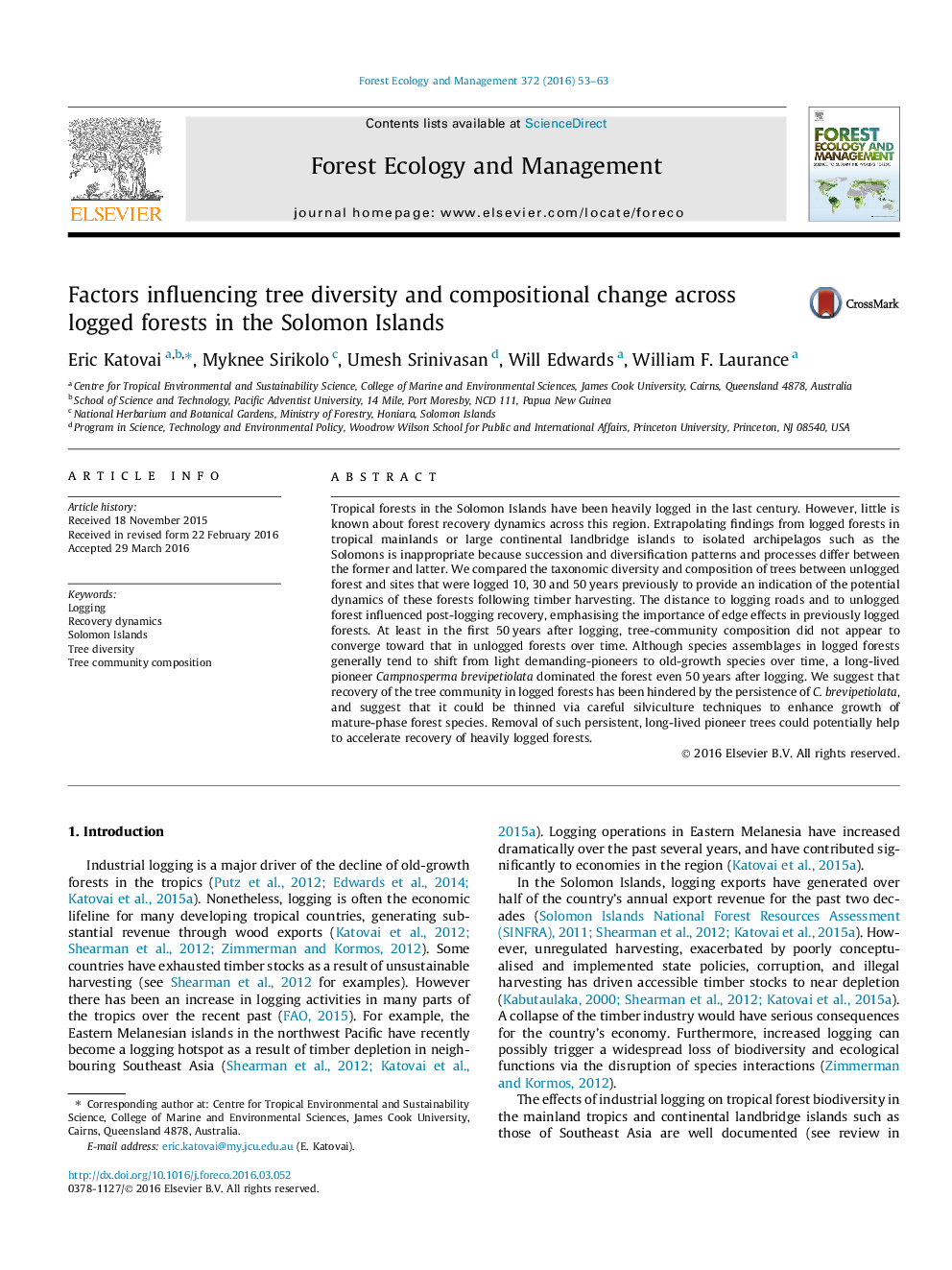| Article ID | Journal | Published Year | Pages | File Type |
|---|---|---|---|---|
| 6542273 | Forest Ecology and Management | 2016 | 11 Pages |
Abstract
Tropical forests in the Solomon Islands have been heavily logged in the last century. However, little is known about forest recovery dynamics across this region. Extrapolating findings from logged forests in tropical mainlands or large continental landbridge islands to isolated archipelagos such as the Solomons is inappropriate because succession and diversification patterns and processes differ between the former and latter. We compared the taxonomic diversity and composition of trees between unlogged forest and sites that were logged 10, 30 and 50Â years previously to provide an indication of the potential dynamics of these forests following timber harvesting. The distance to logging roads and to unlogged forest influenced post-logging recovery, emphasising the importance of edge effects in previously logged forests. At least in the first 50Â years after logging, tree-community composition did not appear to converge toward that in unlogged forests over time. Although species assemblages in logged forests generally tend to shift from light demanding-pioneers to old-growth species over time, a long-lived pioneer Campnosperma brevipetiolata dominated the forest even 50Â years after logging. We suggest that recovery of the tree community in logged forests has been hindered by the persistence of C. brevipetiolata, and suggest that it could be thinned via careful silviculture techniques to enhance growth of mature-phase forest species. Removal of such persistent, long-lived pioneer trees could potentially help to accelerate recovery of heavily logged forests.
Keywords
Related Topics
Life Sciences
Agricultural and Biological Sciences
Ecology, Evolution, Behavior and Systematics
Authors
Eric Katovai, Myknee Sirikolo, Umesh Srinivasan, Will Edwards, William F. Laurance,
